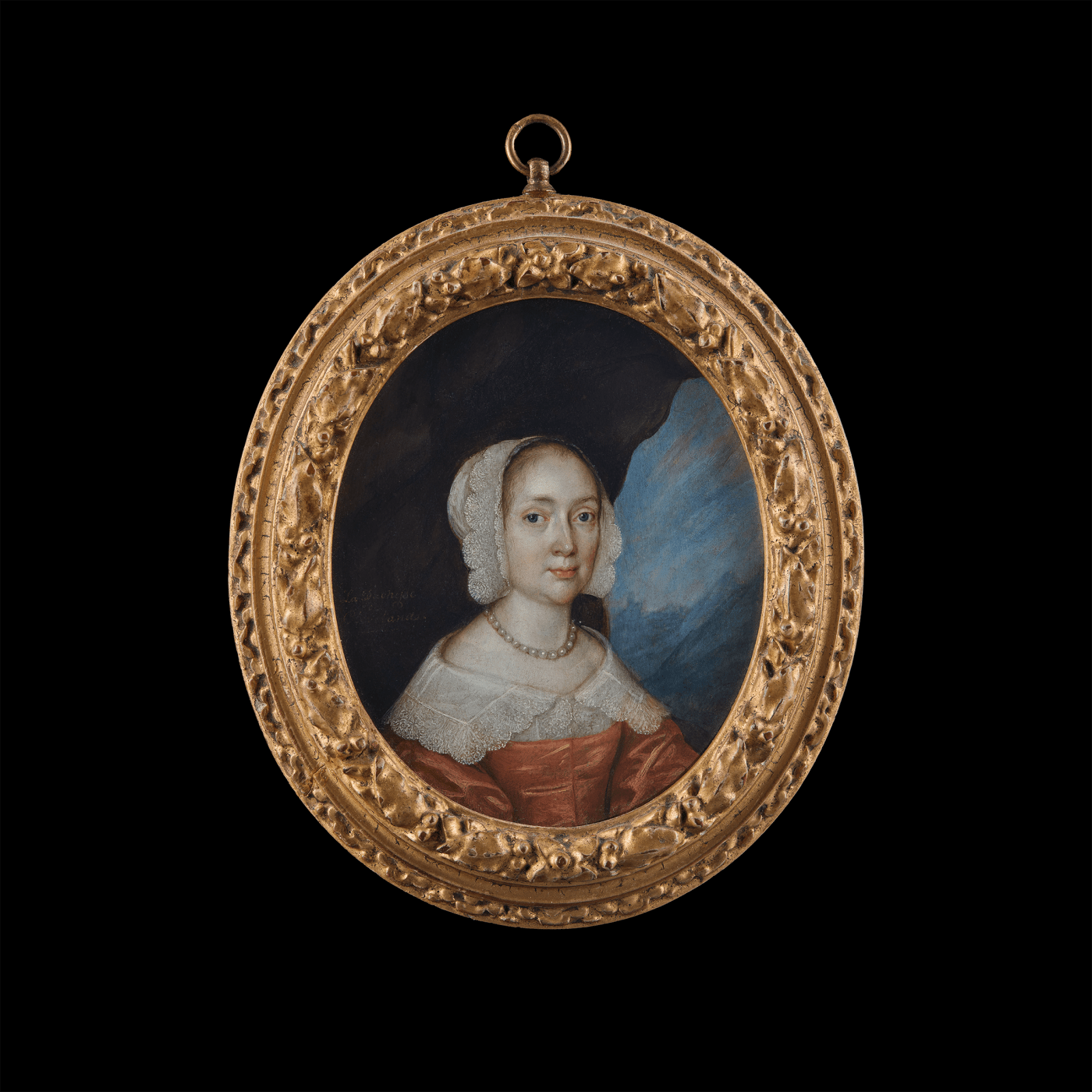In this film, Lawrence Hendra, Head of Research, and Emma Rutherford, Portrait Miniatures Consultant, delve into the life and work of the prolific portrait painter, Joan Carlile. Carlile was one of the first professional female portrait painters working in Britain. The present work was painted in the late 1640s, and like other early works by Carlile, is painted on an intimate scale. The copper support of this work adds a luminous tonality to the sitter's face. The support may also make more visible the careful drawn lines around the side of the face and neck. The lightening-bolt effect of some of the highlights on the coral silk is similarly distinctive and the rocky setting with a landscape beyond, whether real or imagined, echoes the format of her full-length portraits. In addition to an in-depth discussion on the artist, Lawrence Hendra and Emma Rutherford also explore the identity of the unknown sitter; traditionally identified incorrectly as Barbara Villers, Duchess of Cleveland...
In this film, Lawrence Hendra, Head of Research, and Emma Rutherford, Portrait Miniatures Consultant, delve into the life and work of the prolific portrait painter, Joan Carlile. Carlile was one of the first professional female portrait painters working in Britain. The present work was painted in the late 1640s, and like other early works by Carlile, is painted on an intimate scale. The copper support of this work adds a luminous tonality to the sitter's face. The support may also make more visible the careful drawn lines around the side of the face and neck. The lightening-bolt effect of some of the highlights on the coral silk is similarly distinctive and the rocky setting with a landscape beyond, whether real or imagined, echoes the format of her full-length portraits.
In addition to an in-depth discussion on the artist, Lawrence Hendra and Emma Rutherford also explore the identity of the unknown sitter; traditionally identified incorrectly as Barbara Villers, Duchess of Cleveland (1640-1709), who is shown before a rocky outcrop, a visual prop borrowed from the work of Anthony van Dyck (1599-1641), and later proliferated by Carlile's contemporary Samuel Cooper.
This work is currently on display at Philip Mould & Company as part of our exhibition, Pioneers: 500 Years of Women in British Art. Click here for more information on the other works in our current exhibition.



